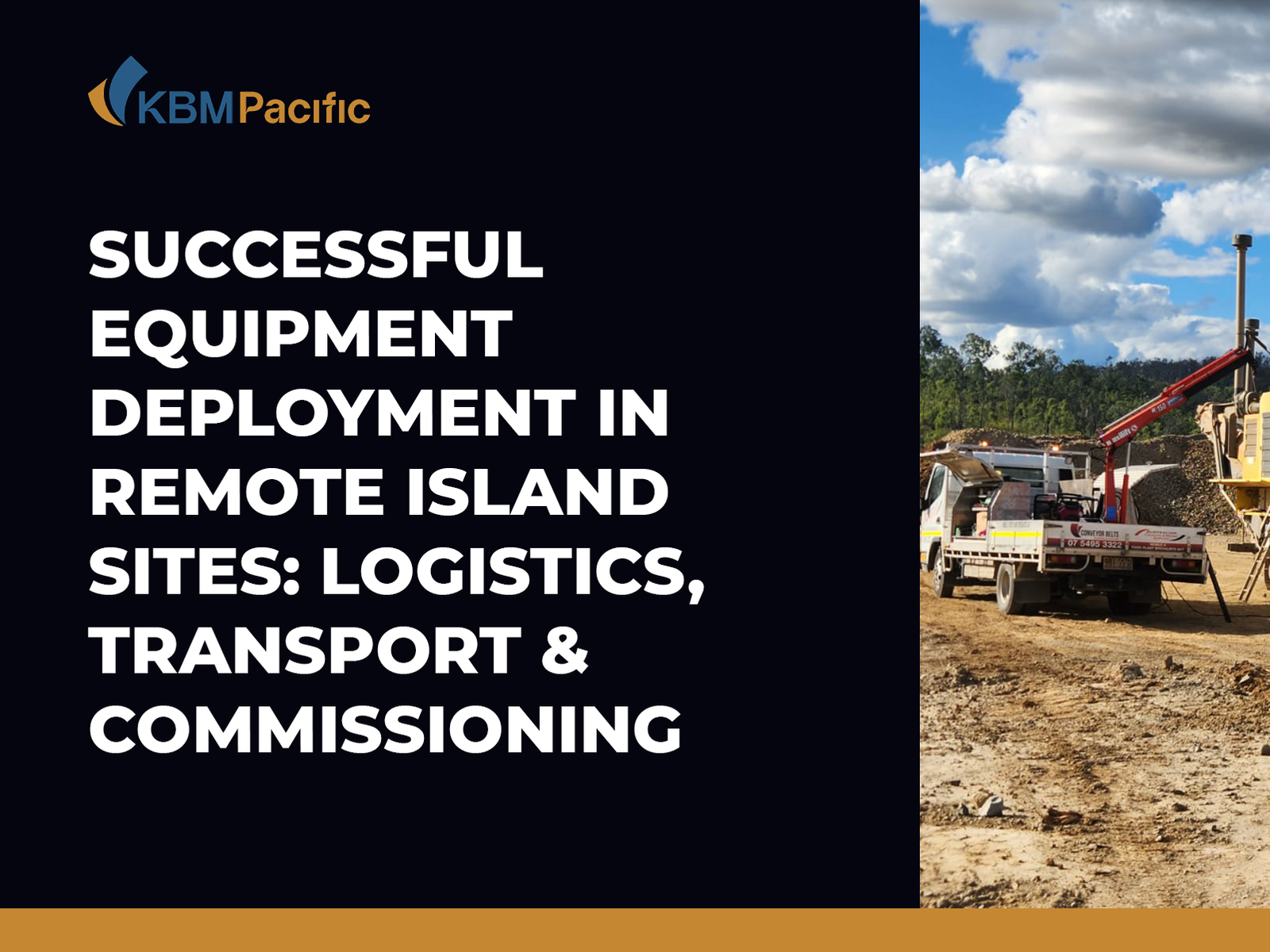Getting equipment onto a remote island sounds simple on paper: load it up, ship it out, drop it in. In reality, it’s a juggling act of weather, tides, customs paperwork, and the kind of “roads” that barely deserve the name. At KBM Pacific, this isn’t unusual—it’s just how the job gets done in our part of the world.
The secret? Planning like you’ve done it a hundred times, but staying flexible enough to deal with whatever curveball the islands throw at you.
Start before you ship
We don’t move a single crate until we know the lay of the land (and water). Is there a jetty that can handle the weight? Do tides give us a two-hour window or ten minutes? Is cyclone season about to shut us down? These aren’t small details—they make or break the schedule.
We break big machines into modules that can be landed safely and actually moved inland. And we test and assemble as much as possible back on the mainland. Every bolt tightened in Brisbane or Auckland saves time and stress in a tropical downpour.
Moving the gear
The big ships get equipment to regional hubs—Brisbane, Townsville, Auckland, Suva. From there, it’s smaller barges and landing craft. Sometimes you’re rolling gear off at a wharf. Other times it’s straight onto a beach, with the tide ticking away and everyone working flat-out to get it ashore before the water drops.
And then comes the last mile. No wide highways here—just tracks through bush, sand, or mud. Self-propelled trailers, winches, skids, and occasionally a bit of bush-engineered creativity get the load to site. This is where local knowledge is gold. People who know the tides, the ground, and the shortcuts make all the difference.
Getting it running
Landing the gear is half the story. Making it work is where it counts. Civil works have to be ready before we arrive—pads, footings, drainage sorted. Then it’s alignment, wiring, hookups, and staged commissioning until the system is live. There’s no “plug and play” when you’re hundreds of kilometres from the nearest parts shop.
And we don’t leave without handing over properly. Training local crews to run and maintain the equipment is just as important as installing it. If the knowledge doesn’t stay behind, the project won’t last.
Always expect the curveballs
Island jobs test you. Weather delays, a barge running late, a critical part giving up at the wrong time—it happens. That’s why we carry spares, build slack into the schedule, and bring the gear to fix problems on the spot. It’s not about avoiding issues—it’s about being ready when they hit.
Why we do it
When the job’s done, you’re not just looking at a piece of machinery—you’re looking at power for a hospital, reliable infrastructure for a community, or a system that keeps a mine running. That’s the payoff.
For us, remote island deployments aren’t “special projects.” They’re part of working in Australia, New Zealand, and the Pacific. It’s tough, sure—but that’s what makes getting it right so satisfying.



